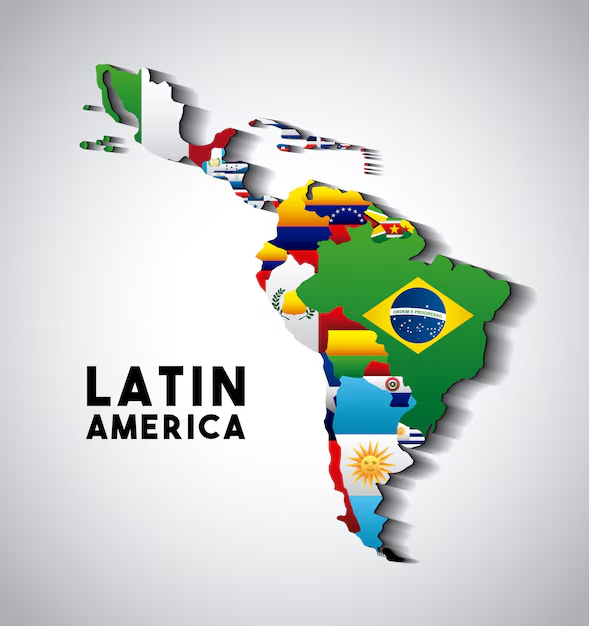Indigenous Land Rights and Self-Determination in South America: A Path Towards Sustainable Development and Social Justice
Indigenous communities in South America face a persistent struggle for land rights and self-determination, a complex interplay of historical injustices and contemporary challenges. This article analyzes the multifaceted issues confronting these communities, applying relevant theoretical frameworks such as the Capabilities Approach (Sen, focusing on the expansion of human capabilities), the theory of environmental justice (linking social justice with environmental protection), and the principles of Free, Prior, and Informed Consent (FPIC) to illuminate the pathways towards a more equitable and sustainable future. Key concepts explored include land tenure security, environmental sustainability, self-governance, and the preservation of indigenous knowledge systems. The analysis highlights both the persistent obstacles and the progress being made, emphasizing the importance of collaborative action and transformative policy changes.
1. Securing Indigenous Land Rights and Territorial Integrity: The foundational challenge for South American indigenous communities lies in securing and protecting their ancestral lands. Historical injustices, including colonization and forced displacement, have severely impacted land tenure security. Applying the concept of territoriality (Sack), we understand the deep cultural and spiritual connection indigenous communities have with their lands. The absence of legally recognized land rights and the weak enforcement of existing legislation leave indigenous communities vulnerable to land grabbing, resource extraction, and further marginalization. The lack of secure land tenure directly undermines the communities' ability to engage in sustainable resource management, impacting their economic well-being and cultural survival. Cases of successful land restitution and legal recognition highlight the necessity for effective land titling programs that prioritize indigenous participation and knowledge.
2. Environmental Sustainability and the Impact of Extractive Industries: The biodiversity-rich lands inhabited by indigenous communities are frequently targeted by extractive industries such as mining and logging. These activities pose significant environmental risks, including deforestation, pollution, and biodiversity loss. This relates directly to the environmental justice framework, highlighting the disproportionate burden indigenous communities bear from environmental degradation. Furthermore, these activities often occur without Free, Prior, and Informed Consent (FPIC), a cornerstone principle of the UN Declaration on the Rights of Indigenous Peoples, violating indigenous rights and perpetuating environmental injustice. Sustainable development approaches, emphasizing community-based resource management and equitable benefit-sharing, are crucial for mitigating environmental damage and ensuring the long-term sustainability of these ecosystems. The application of ecological modernization theory (Mol) suggests that integrating indigenous ecological knowledge with modern environmental management practices could foster more sustainable and equitable outcomes.
3. Self-Governance and the Exercise of Indigenous Rights: Self-governance is paramount to the well-being and self-determination of indigenous communities. This aligns with the Capabilities Approach, emphasizing the need for communities to have the agency and resources to exercise control over their lives and futures. However, bureaucratic obstacles and a lack of political recognition frequently impede indigenous participation in decision-making processes affecting their territories and lives. Strengthening indigenous institutions, promoting participatory governance structures, and ensuring meaningful inclusion in national and international policy forums are vital steps towards achieving self-governance and promoting community-led development initiatives. The application of the concept of political autonomy (Kymlicka) emphasizes the need for indigenous communities to have the power to make decisions about their own affairs within a broader framework of national governance.
4. Addressing Systemic Inequalities and Social Inclusion: Indigenous communities disproportionately experience poverty, limited access to education and healthcare, and pervasive social discrimination. These systemic inequalities, rooted in historical injustices and ongoing marginalization, perpetuate cycles of disadvantage. The application of intersectionality theory reveals the complex interplay of factors such as ethnicity, gender, and class that contribute to these disparities. Targeted programs addressing poverty, improving access to essential services, and promoting indigenous representation in political and economic spheres are crucial for advancing social inclusion and reducing social inequality. This includes fostering culturally appropriate healthcare and education systems that integrate indigenous knowledge and values.
5. Cultural Preservation and Language Revitalization: The preservation of indigenous languages and cultural practices is essential for maintaining community identity and transmitting vital traditional knowledge. Language endangerment is a significant concern, with many indigenous languages facing extinction. The application of cultural revitalization strategies, including community-based language programs and cultural heritage preservation initiatives, is crucial for maintaining cultural diversity and intergenerational knowledge transfer. The safeguarding of cultural heritage not only enriches global society but also empowers indigenous communities, allowing for the transmission of valuable traditional knowledge relating to sustainable resource management and community well-being.
6. Empowering Indigenous Women and Promoting Gender Equality: Gender inequality within indigenous communities often intersects with other forms of marginalization. Empowering indigenous women and promoting gender equality is crucial for advancing social justice and achieving sustainable development. This requires addressing gender-based violence, promoting women's leadership roles, and ensuring equitable access to resources and opportunities. The integration of a gender lens into development programs and policies is essential for achieving meaningful and lasting change. This includes providing women with equal access to education, healthcare, and economic opportunities.
Conclusion and Recommendations: The challenges facing indigenous communities in South America are deeply intertwined and demand a holistic approach to address the root causes of injustice and inequality. Progress requires a multi-pronged strategy encompassing legal reforms that guarantee land rights and self-governance, investments in culturally appropriate education and healthcare systems, support for indigenous-led development initiatives, and a commitment to collaborative partnerships. Further research is needed to explore the effectiveness of different interventions, assess the impact of policies on indigenous well-being, and develop culturally sensitive indicators of progress. The integration of indigenous perspectives and knowledge is crucial for achieving lasting and sustainable solutions. International cooperation, along with national governmental commitments, is essential for fulfilling the aspirations of indigenous communities and building a just and equitable future for all. This collective commitment is not only a moral imperative but also essential for promoting environmental sustainability and fostering social cohesion within South America.
Reader Pool: What specific policy recommendations or strategies would you suggest to strengthen indigenous land rights protection and promote self-determination in South America, considering the complexities of legal frameworks, economic pressures, and the need for community participation?




